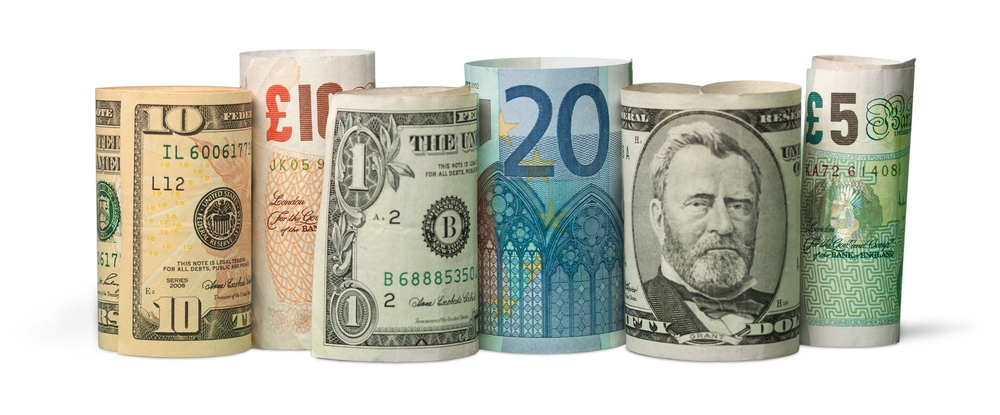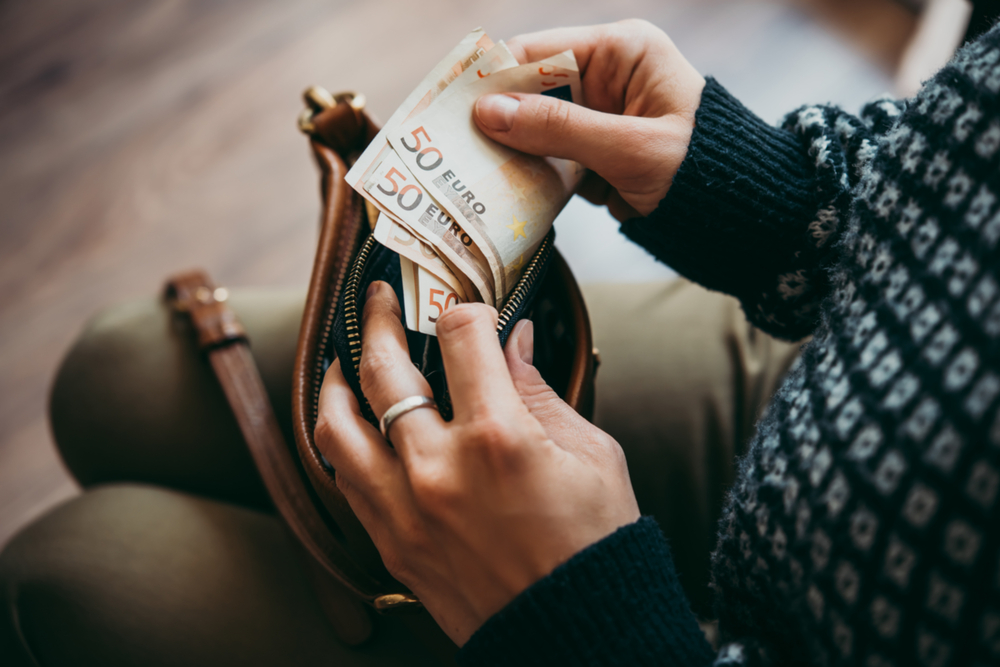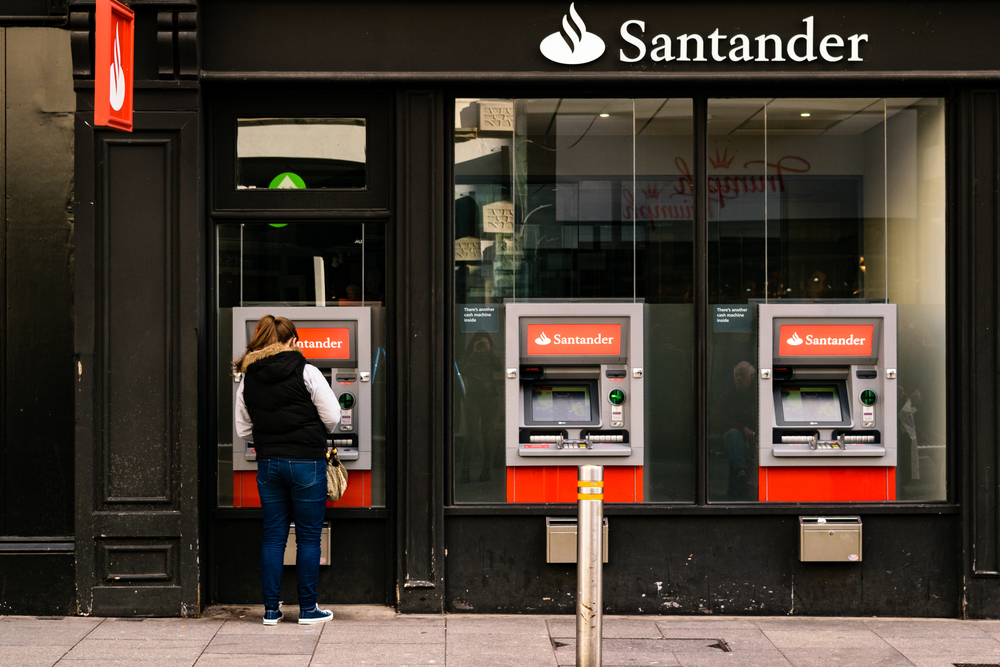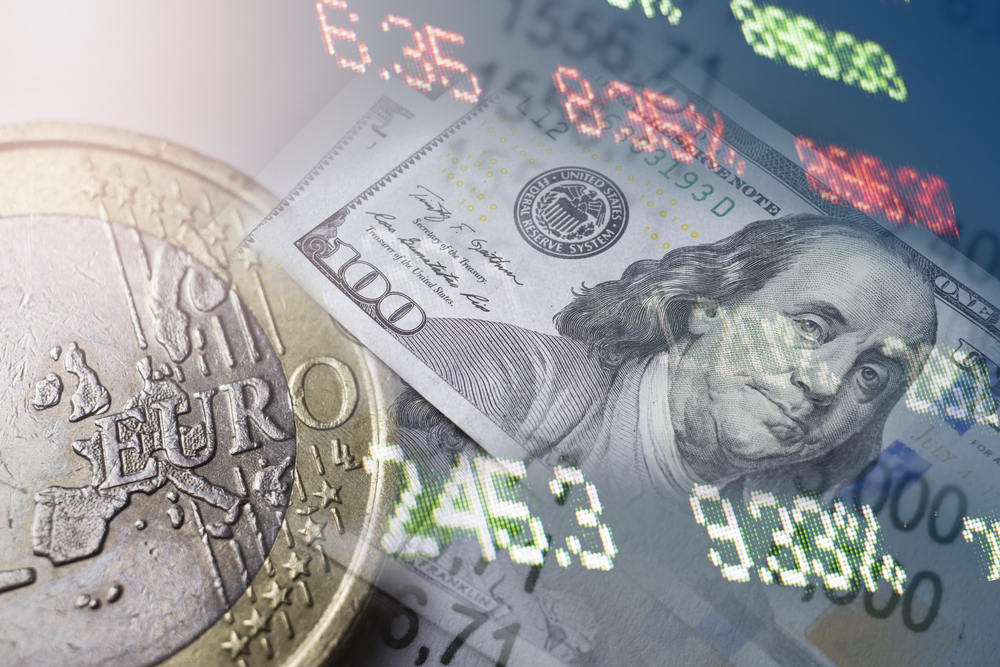Taking out cash in a foreign country is as easy as it’s every been. Decades ago, the only way to get foreign currency was to purchase it prior to travel. Your bank handled the details, took a cut, and then you had money.
Travelers checks were also a thing, once upon a time. Travelers purchased these from their bank, in varying sums, and since a signature was required, it was considered safer than taking thousands in cash. Withdrawing from an ATM was expensive and sometimes outright impossible, depending on where you were. Purchasing foreign currency took some forethought, a cash reserve, and an idea of budget.
Now, most frequent travelers treat cash withdrawal as an afterthought. Still, there are some important things to keep in mind and some pretty precarious problem areas.

Question: What’s the best way to get foreign currency?
Dear Sarah,
My wife and I are traveling to London and Paris for a week around Christmas. Some of our friends said that the best way to get foreign currency is to go to our bank and get it, but our son said it’s easy to get it from an ATM. What is the best, and cheapest, way to get foreign currency in Europe?
Thank you, Mike
Answer: Take a little bit with you, then withdraw from an ATM
Hi Mike, thanks for your question. Both of your sources are right, but I want to expand on the purchasing factor. In general, since you’re going to two first-world destinations, withdrawing from an ATM is easiest. Buying British pounds and Euros in advance makes little sense, unless you want some on arrival and don’t want to visit an airport ATM. (They typically have higher transaction fees than a city ATM.)
My go-to is to withdraw €60 or £60 on arrival, use it for a taxi, and then withdraw more once I am at my hotel. If I know I can use my credit card without penalty (which is where those amazing credit cards with no foreign transactions fees are great!), I may not even bother with a ton of cash.

When you need a small amount of cash, the best type of ATM to look for is either one you home bank offers abroad, or one that your home bank partners with. There’s a better chance of a lower fee (or none at all) from one of these. I tend to stick with the major international bank in whatever country I am in.
You can minimize cash withdrawals by using a credit card that has no foreign exchange fees, like the Chase Sapphire Reserve (learn more) and earns you points while traveling.
We also suggest checking with your bank to learn if your debit card has an ATM fee rebate policy. Charles Schwab refunds all ATM fees, for example. While a debit card is less secure than a credit card, you can use it for withdrawing small amounts at an airport.
Using A Foreign ATM

Use an ATM connected to a bank building for ease and security purposes. Cristina Nixau / Shutterstock.com
ATMs work the same in all countries. The main screen will almost always offer an English language choice. You’ll input your pin and then select the amount you want to withdraw. There’s always a notification about the ATM fee (usually €/£3 or so) and a message that your bank may charge an additional fee. Accept these, and your cash will spit out. Don’t forget to grab your card.
Safety at a Foreign ATM
I hate to bring it up, but there are sometimes scams at ATMs. Be cautious of anyone loitering near you and if you feel insecure, don’t use the ATM.
When in the city, I always choose one that is connected to a bank building, and I rarely go at night. (I say rarely because I will stop if it is a busy street and there is a light.) One basic method of fraud prevention is to wiggle the card slot on the ATM. Tampering is more common in some countries than others, and giving the card reader a good shake can reveal a shoddily tampered card scanner that might be waiting to steal your card information.
Be especially wary of someone offering to help you use the ATM. No one needs to help you use an ATM that is in English, and no Good Samaritan will offer.
Purchasing Foreign Currency in Advance

Purchasing foreign currency in advance is highly convenient, but it is also not often as cost-effective as withdrawing from an ATM. Commission fees and not-awesome exchange rates eat into your money, and you end up with less cash than you would at an ATM.
There are some instances, though, in which you should consider purchasing foreign currency in advance. Mike and his wife are going to Western Europe, so they’ll have no problems finding an ATM. However, travelers heading off the beaten track, to Central Asia, for example, or certain places in Africa or the Pacific, should check with their bank about buying enough currency to last while they are there. Be aware that there are restrictions on how much cash a person can bring into (and out of) a country, so don’t plan on taking $10,000 through customs.

Get foreign currency on arrival at a Travelex kiosk or online in advance. testing / Shutterstock.com
A few reputable companies that offer currency services include Travelex, AAA and Wells Fargo. Your local bank or credit union might also offer this service, so if you have time before you travel, check with your local bank.
Travelex
Regarded as one of the best places for purchasing foreign currency, Travelex is found in brick-and-mortar locations as well as online. Store pick up is free if you order online, while you’ll have to pay a shipping fee to get anything less than $1,000 delivered.
AAA
AAA also offers the choice of purchasing foreign currency online or in store. They also offer a AAA Visa TravelMoney Card, which is a preloaded, reloadable, debit card optimized for travel.
Wells Fargo
Wells Fargo offers foreign currency purchase for account holders. However, AAA goes through Wells Fargo, so if you’re doing research you can check the rates that Wells Fargo offers before making a decision.
Upshot
The general consensus from travelers is to avoid purchasing foreign currency while at home*. If you must, only purchase enough to get you through the airport and into the city – at which point you can find an international ATM. *Unless you are going to a destination where getting cash is difficult or impossible!
Mike, I hope I’ve answered your questions about purchasing foreign currency. Have a safe and enjoyable trip to London and Paris this festive season!
*
Sarah is a luxury travel advisor and avid traveller. When she isn’t writing for Point Me To The Plane you can find her crafting custom itineraries for clients or exploring the far reaches of our wonderful planet. Read more about her adventures at The Girl With the Map Tattoo.
The responses below are not provided or commissioned by the bank advertiser. Responses have not been reviewed, approved or otherwise endorsed by the bank advertiser. It is not the bank advertiser's responsibility to ensure all posts and/or questions are answered.
14 comments
The problem with ATMs overseas is that the withdrawal will usually be in large bills. Good luck buying, say, a gelato in Italy with a 50 Euro note. I usually order some small bills from my own bank in advance for small purchases, tips, etc and then get larger bills from an ATM once I get where I’m going.
If I get them, I do break big bills where I can (hotel, restaurant), but I’ve never had a problem getting €40 – in two twenties – from a city ATM. Now, the airport ATMs … yes, they are usually big bills. I use that for a taxi, then whatever’s left for tips, espresso, gelato. Coincidentally, if you have an airport gelato shop you love, please tell me where it is 😉
For places that are off the beaten track, I think it’s more important to bring brand new USD bills with no tears or creases and just exchange those in that country. In some of those types of countries the exchange rate may be better in the black market too.
In some places I’m inclined to agree, but it’s definitely up to the traveller to research what countries that pertains to.
This advice is old fashioned and too complicated for visiting any country with a modern banking system (ie any first world, and most second world, country with the notable exception of the USA).
Simply load a Revolut or similar card and swap the currencies around in it. It’s unlikely you will need cash (indeed so many places now insist on contactless rather than cash) but, if you do, simply take it out in multples of 10 pounds or euros. Then swap it back on return. The only complicating factor is to avoid falling for the paying in your home country scam – but that applies whatever card you brandish.
Even in first world countries like Italy, the UK, and Australia, I have been to places that don’t take cards of any kind because of the fees involved on the merchant end. Call it old-fashioned, but I would rather not be caught out without being able to pay because I assumed they would take a card.
I’ve found I can buy Canadian dollars British Pounds and Euros at auction for less than exchange rates. Two problems: you are at the mercy of exchange rate fluctuations between when you buy and when you use the money, and the auctions are still selling old British Pound coins.
Thank you for your comment, Jim! I’d agree that buying currency on the black market or at an auction leaves you susceptible to problems like old, unacceptable currency. The only place that will take it are the banks, and who wants to spend time standing in line at a bank while on vacation? (And depending on the currency, no guarantee the bank will take it.)
I was in India a year plus ago when Modi was clamping down on cash. All ATMs were out of cash and you could only exchange about $100 (can’t remember exactly) for rupees.
I had a severe cash crunch as I went to the far northeast in Jagun where ccs were not accepted. I should have researched the situation before going and paid the premium for rupees in USA before leaving.
But that was a rare exception. ATMs are everywhere now even in remote areas like Jagun (if they have cash). Problem in India is long lines at nearly all ATMs where I have been.
That sounds frustrating! Glad it worked out
Try also not to use cash, we’re in 2018
There are still places in first world countries that don’t take cards though … and if you want to leave a tip in Europe, you need cash. So, yes, it’s 2018, but you should still have a little cash.
Great tips! Currently living abroad in Europe, I think you hit the nail on the head. I use my Bancomat card usually 2 times per week; once at the gas station, and once at the grocery store. It is convenient for those odd values of euros and cents. Many local places do not accept cards, and the increments are usually €1. It makes life really easy, and if you go to a restaurant with a few people and rack up a bill, the proprietor sometimes rounds down to the nearest €5! Cash definitely is king here. I would recommend not ending up like a woman I saw in Rome last year who tried to pay for her dinner with a $100 (yes USD) bill because the credit card machine wouldn’t work with her card.
Yikes! It reminds me of a guy I met in New Zealand who had brought hundreds of USD because he didn’t know what currency they used. Research is key. Thanks for the insider info on living in Europe. There are definitely places I wouldn’t think to use a card, regardless of any foreign transaction fees, because cash makes more sense.